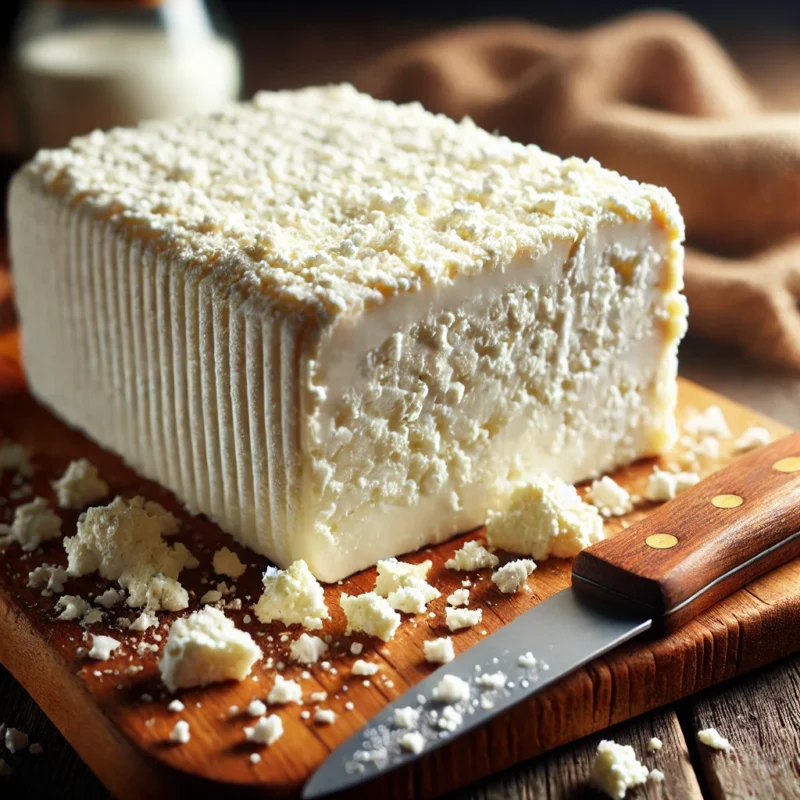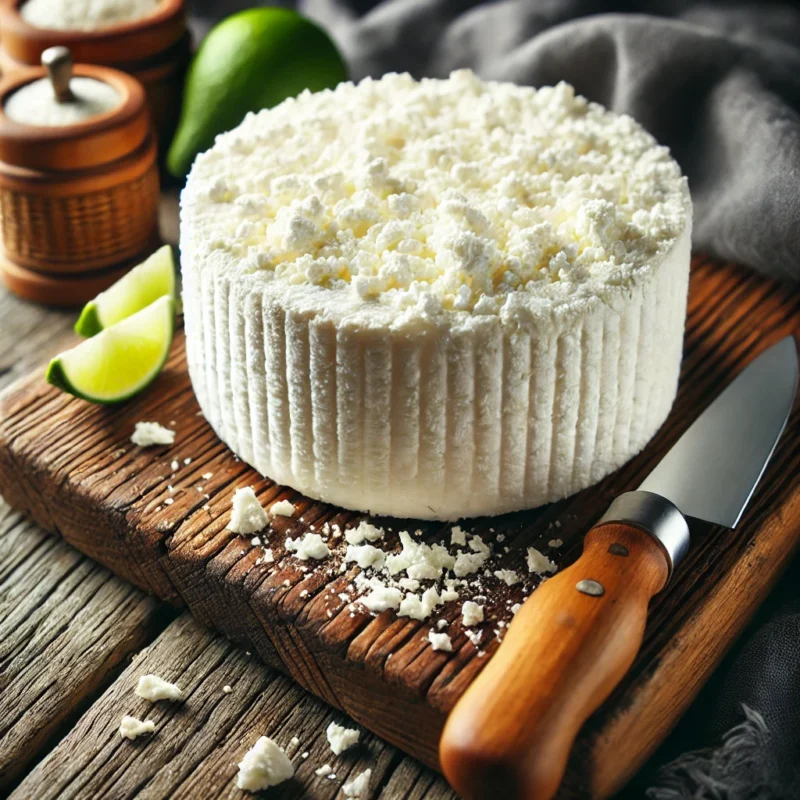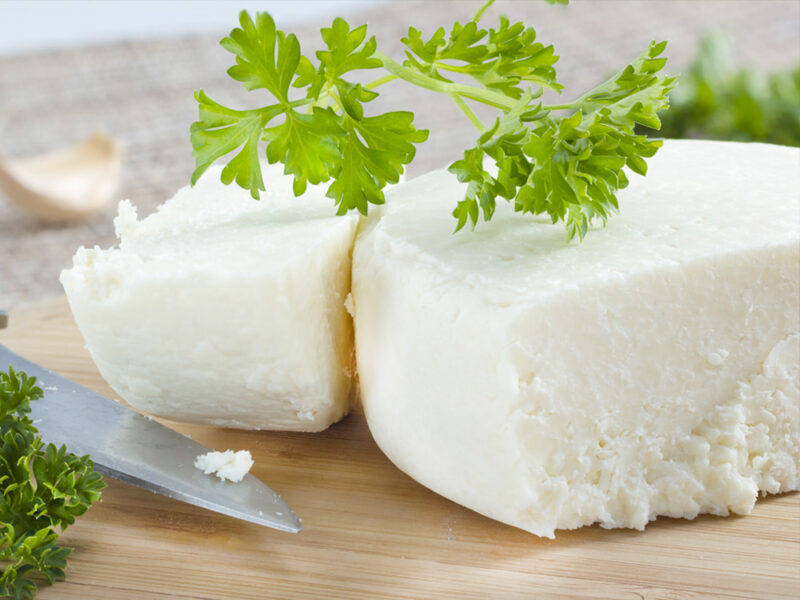Cotija cheese, often referred to as the “Parmesan of Mexico,” brings a burst of flavor to any dish it graces. This dairy product, made from cow’s milk, has a unique taste that can elevate everything from tacos to salads. But how long can you keep it in your fridge before it loses its charm? The answer depends on whether it’s fresh or aged and how you store it.
Fresh vs. aged Cotija
Fresh Cotija cheese is a soft and moist treat that usually stays good for about 4-6 weeks in the fridge. Because it’s so moist, it can spoil quicker than the aged stuff. Fresh Cotija is perfect for those recipes where you want a creamy texture to really stand out, like sprinkling over tacos or mixing into dips.
On the other hand, aged Cotija is a whole different story. It’s firmer and drier, and if you store it right, it can last for several months. The aging process reduces its moisture, making it last longer. Plus, it’s got a strong flavor and crumbly texture that’s awesome for grating over dishes, adding a fantastic umami kick.
Can you freeze it?
Both fresh and aged Cotija can be frozen for extended storage. When frozen, it can last up to 6 months, and some claim it can even be stored for up to a year. Just a heads-up, though: freezing Cotija can change its texture a bit, making it dry and crumbly, and it might lose some of that delicious flavor.
To get around this, try using your frozen Cotija in cooked dishes, where the texture won’t be as noticeable.
Which factors affect shelf-life?

There are several factors that affect the shelf-life including:
1. Salt content
Salt is a natural preservative, and Cotija cheese contains a fair amount of it. The salt slows down bacterial growth, giving the cheese a longer shelf-life. But don’t rely on the salt alone to keep it fresh forever. Store your Cotija properly to make the most of its natural preservatives. Plus, the salt gives Cotija that extra savory punch, making it even tastier.
2. Milk content
Cotija cheese is made from cow’s milk, which is delicious but also a magnet for bacteria because of the sugars and water in it. This makes proper storage super important. If not stored right, the lactose can ferment and spoil the flavor.
Knowing this helps you understand why Cotija needs some TLC when it comes to storage. The milk content also gives Cotija its rich, creamy goodness that we all love.
3. Moisture content

Moisture is a big deal for Cotija cheese. Fresh Cotija, which is more moist, spoils faster than aged Cotija. More moisture means more chances for bacteria to grow. Aged Cotija has less moisture, so it lasts longer. That’s why it’s great for long-term use in various dishes.
4. Storage method
How you store your Cotija makes a huge difference. Leave it out at room temperature, and it’ll spoil within a day. Refrigeration is key to keeping it fresh. Wrap it tightly to keep air out and prevent it from drying out and spoiling.
Use airtight containers or resealable bags for extra protection against moisture loss and contamination. Keep it cool and consistent in the fridge to preserve its texture and flavor.
Proper storage methods

If you want your cheese to last, here’s how to store it properly:
Refrigeration
To keep your Cotija cheese fresh, store it in the fridge at a steady temperature between 34-38 °F (1-3 °C). Avoid putting it in the fridge door where the temperature fluctuates more, speeding up spoilage. Wrap the cheese in clean wax paper, then place it in an airtight container or a resealable bag.
This keeps it moist and stops it from soaking up other fridge odors. Wax paper lets the cheese breathe a bit while protecting it from drying out. Check the cheese regularly for any spoilage and rewrap it in fresh wax paper if needed.
Freezing
If you need to freeze Cotija cheese, wrap it in wax paper, then plastic wrap, and finally in aluminum foil. Pop it into an airtight container to prevent freezer burn. This way, the cheese stays good for up to 6 months. Make sure to label it with the date, so you know when to use it.
If you decide to freeze the cheese
If you’re thinking about freezing Cotija cheese, keep in mind that its texture will change. Once you thaw it, the cheese can become dry and crumbly. This happens because ice crystals form during freezing, messing with the cheese’s structure. But don’t worry, you can still use it in cooked dishes or as a topping where texture isn’t a big deal.
Be prepared for flavor loss
Freezing can also dull the cheese’s distinctive flavor. While it’ll still be usable, it might not have the same kick as when it was fresh. This is especially true for fresh Cotija, which is known for its delicate, creamy taste.
To counter this, pair your frozen Cotija with other strong flavors in your dishes. This way, the overall taste stays delicious, even if the cheese itself has lost some of its original flavor.
How to thaw the frozen cheese
To thaw frozen Cotija, just place the wrapped cheese on a plate and let it thaw in the fridge overnight. This slow thawing process helps keep its texture and flavor as intact as possible. Avoid leaving it out at room temperature to thaw, as that can cause uneven thawing and might lead to spoilage.
Once thawed, use the cheese within a few days to ensure it’s still at its best.
Signs of spoilage

If you are not sure whether your Cotija can be consumed, pay attention to these signs:
Smell
Give it a sniff. If it smells sour or rancid, it’s time to toss it. Fresh Cotija has a unique smell, but it shouldn’t be unpleasant. Trust your nose—if it smells funky, it’s best to play it safe and get rid of it. That off smell usually means bacterial growth or fermentation, so it’s not worth the risk.
Discoloration
Check the color. Fresh Cotija is white or off-white. If you notice any green, blue, or black spots, it’s definitely gone bad. Even if just a part of it looks off, it’s safer to throw away the whole piece. Keeping an eye on the color helps ensure you’re eating safe, tasty cheese.
Mold
Cotija isn’t supposed to be moldy. If you see mold, you might be able to cut it away if it’s just a small spot. But if it’s widespread, it’s time to say goodbye. Mold can produce harmful toxins, so don’t take any chances. If you’re ever unsure, it’s better to toss it out. Regularly checking for mold can help you catch spoilage early.
The bottom line
In short, you can keep Cotija cheese fresh in the fridge for 1 to 2 months if you store it right. Just follow these easy tips on packaging, storage temperature, airflow, moisture control, handling, and spoilage detection. Proper storage not only keeps it fresh, but also ensures its safe and high-quality.

